St Mary the Virgin
Church History
Originally Wenden consisted of two parishes, Great Wenden (Wenden Magna) and Little Wenden (Wenden Parva) and both are referred to in the Domesday Book. In 1662 the parishes were amalgamated to become Wendens Ambo – literally the “Wendens together”. The reasons why this came about were clear in the petition to the Bishop of London: the church at Little Wenden was in a poor condition, the villages were less than half a mile apart, Great Wenden church was big enough for all the parishioners and since the reformation the church income from both parishes was so small that they were scarcely able to retain one minister. So Little Wenden church was pulled down and Great Wenden, dedicated to St Mary the Virgin, became the place of worship for the people of the new parish of Wendens Ambo.

Early Years
Wendens Ambo church, formerly that of Great Wenden, is dedicated to St Mary the Virgin, and though not large, is one of the oldest and most interesting churches in north-west Essex. It consists of a chancel with organ chamber, an aisled nave, a south porch and a western tower. A vestry (late 15th century) is situated in the western end of the south aisle, a somewhat unusual position.The first church on the site was probably made of wood, perhaps as early as the 8th century, but no trace of it remains.
It seems to have been rebuilt in stone about the time of the Domesday book (1086 AD) when the plan included a short and narrow chancel, a nave the same size as at present and a massive western tower which is still standing, little altered. In the 13th century the south aisle was built and extended to align with the west wall of the tower. The chancel was widened and lengthened when a more elaborate ritual became fashionable.
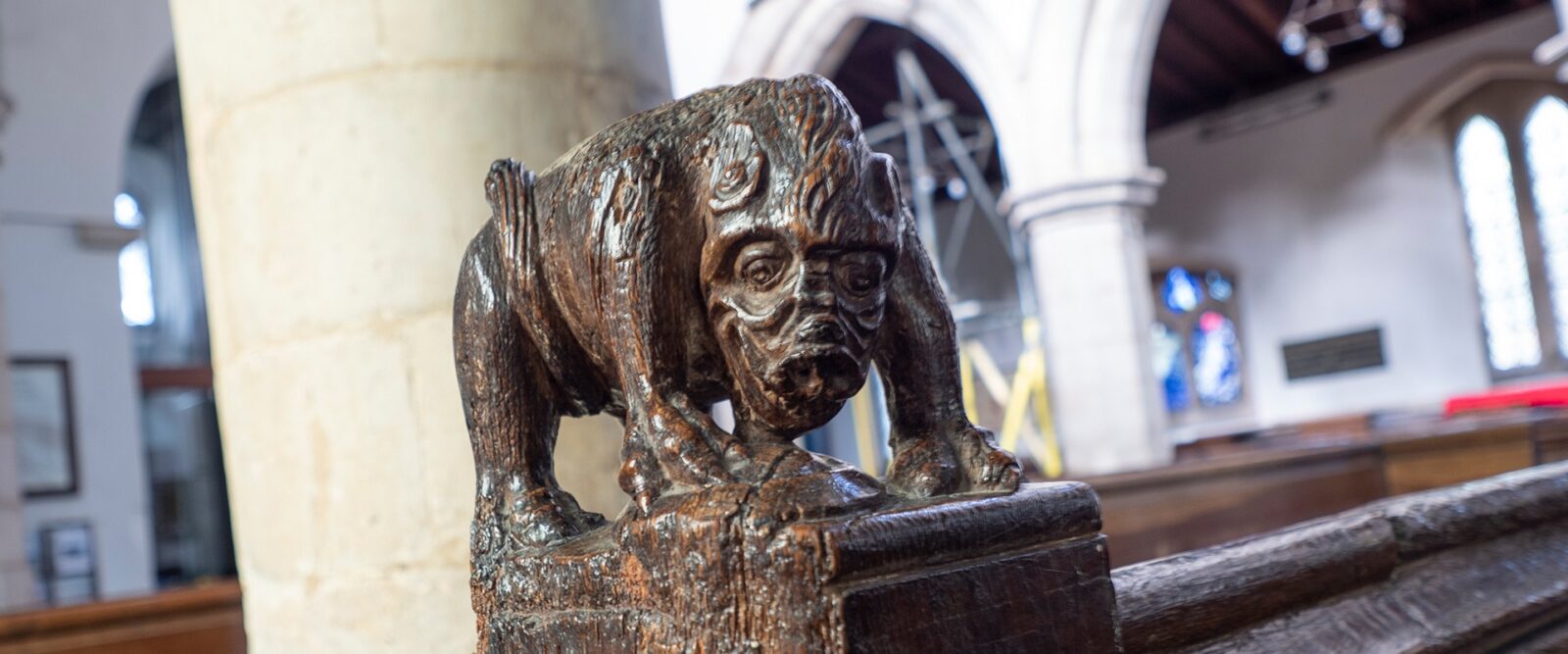
The Church, Plan
The Nave (9.75m by 5.33m) is very high (almost 12m), and the roof rises almost to the parapet of the tower. The roof is modern, except for two king-post tie-beams, and four 15th century wall-plates. The ceiling of the ground floor of the tower is also 15th century.
The early 14th-century northern arcade has three bays, with octagonal columns. The North Aisle (3.5m wide) extends to the western wall of the tower and is late Victorian.
The early 13th-century southern arcade also has three bays, with round columns; the eastern and western arches have been widened, apparently early in the 16th century.
The South Aisle (2.1m wide) has a mid-15th century window of three panels. The 19th century stained glass shows the story of the prodigal son.
In the south aisle, there is a piscina with a moulded and pointed head, two basins. Part of the left-hand side of the stone surround is early 14th century.
The porch on the southern side is late 19th century, replacing a dilapidated 15th century one, of which only a tie-beam supporting a short king-post is left. The south doorway (13th century) is very worn which suggests there was no porch prior to the 15th century.

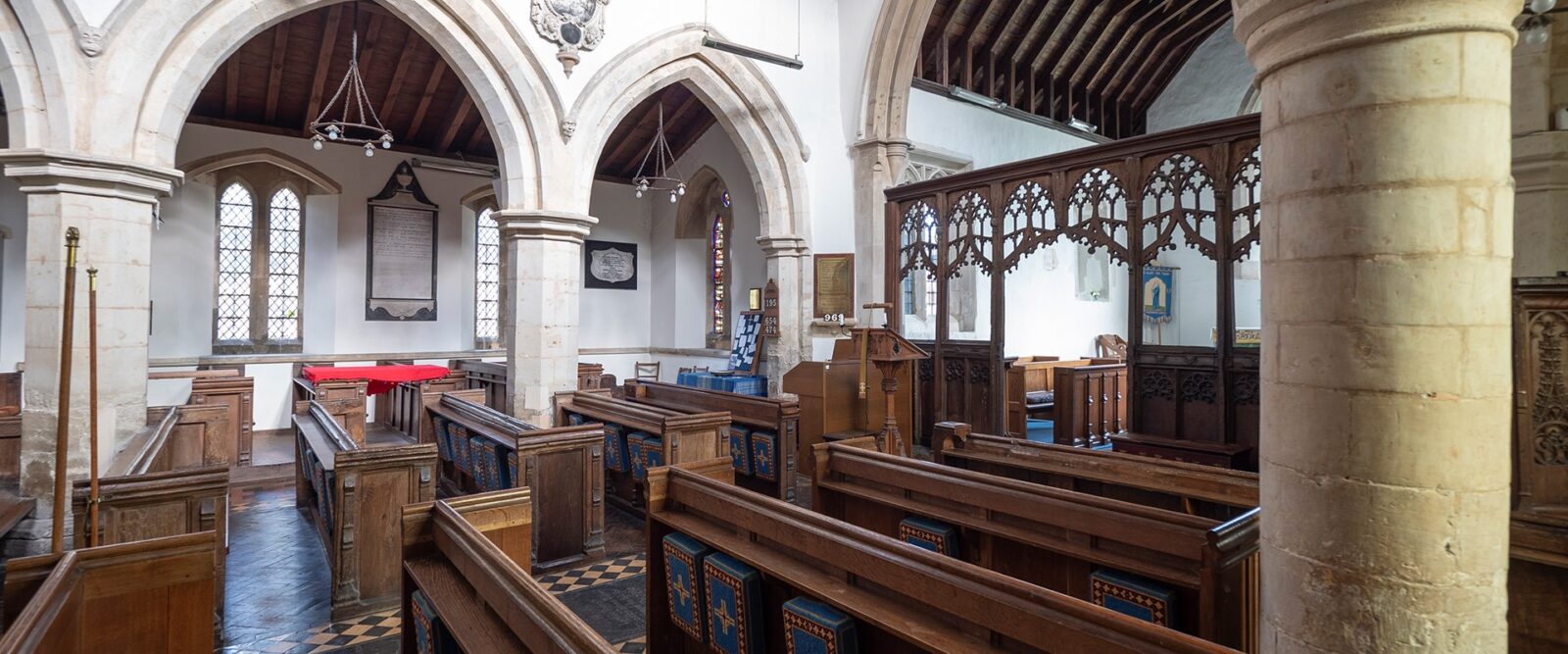
Pulpit and Seating
Pulpits weren’t introduced into western churches until about the 14th century so this pulpit, dating from about 1500, is an early example. The pulpit is the same date as the screen. It is nine-sided and tapers slightly. It stands on nine legs and has elaborate traceried panels, the two forming the door having additional decoration.
In the nave there are six benches and one pew-front on each side of the central aisle, all with buttressed ends and moulded rails. At one end of the southern pew-front there is a carving of an animal with one paw on a mirror, dated to the late 15th century.


Carved Bench End
The carved bench end illustrates a legend from the Book of Beasts, the myth of the Tigress and the Mirror, but the wood carver has substituted a boar, a savage beast probably better known to him than a tigress. The story is that a tigress robbed of her cubs chases the robber, who, when caught throws down a circular mirror to distract and deceive her. She stops for a moment and then carries on the chase until he throws down another mirror. This time she sees her own reflection and mistakes it for her cub and stops to feed it while the robber slips away. The Christian moral was the devil casts illusions of pleasure to capture our souls. Only three other examples of the story are known of: one on a brass in the Midlands and another in Chester Cathedral, and one in stained glass in Aylesbury church.
The Vestry
The Vestry (5m by 2.5m) is formed by the western end end of the south aisle. It is entered through a rough doorway of late 15th or early 16th-century date
The rood screen, dating from about 1500 AD, divides the chancel from the nave. Rood is an Anglo-Saxon word meaning cross and there was a cross above the screen until it was destroyed in the Reformation. When complete the screen must have been very fine. It has five bays (two on each side of the opening) with elaborate tracery and panels at the base. Originally there was vaulted loft above the screen approached by a spiral staircase in the NE angle of the nave.

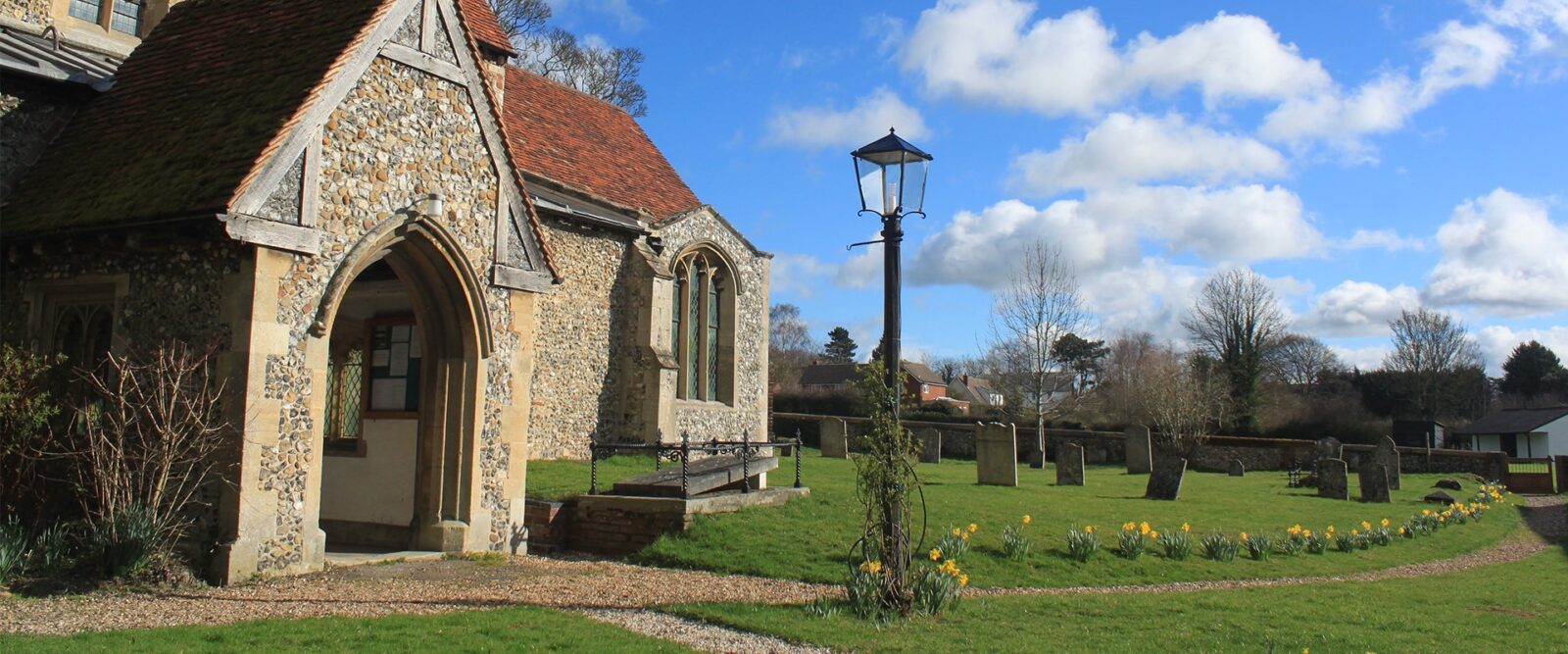
Altar Table & Organ
The altar table is, literally, a table. According to the dedication painted on its front edge, it was donated by Robert Cheek (who came from nearby Arkesden) in 1741. The top was extended, probably in the 1930s, with an oak platform on which the altar cloth and frontal are set.
The old pipe organ, in the organ chamber, dates to the late 18th century, and was given to the church in the late 19th. It is thought to have come from a house in Buckhurst Hill, near Chingford, though its exact origin is unknown.


Wall Paintings
On the wall plaster of the chancel are extensive but damaged remains of a 15th century painting illustrating the story of St Margaret of Antioch and her Martyrdom. On the north wall opposite, is a small fragment of a late 16th century black-letter inscription within an ornamental frame.
West Tower
The semi-circular arch over the West doorway is of bricks, chiefly Roman. Above the ground floor of the tower, where the bell-ringers stand, there is a silence chamber and above that the bell chamber with six bells. Access to the belfry is via a quarter-round oak staircase, enclosed in close-set chamfered framing, with an original door from the late 15th-century. The parapet is 15th century and above it is a small spire or spike covered with lead, called a ‘Hertfordshire spike.’
Stoup: In tower—in the western wall of the tower to the side of the doorway is a stoup or basin parts of which date to the 14th century. This is a very rare position for a stoup and indicates that the west door must have been used as an entrance in earlier times.

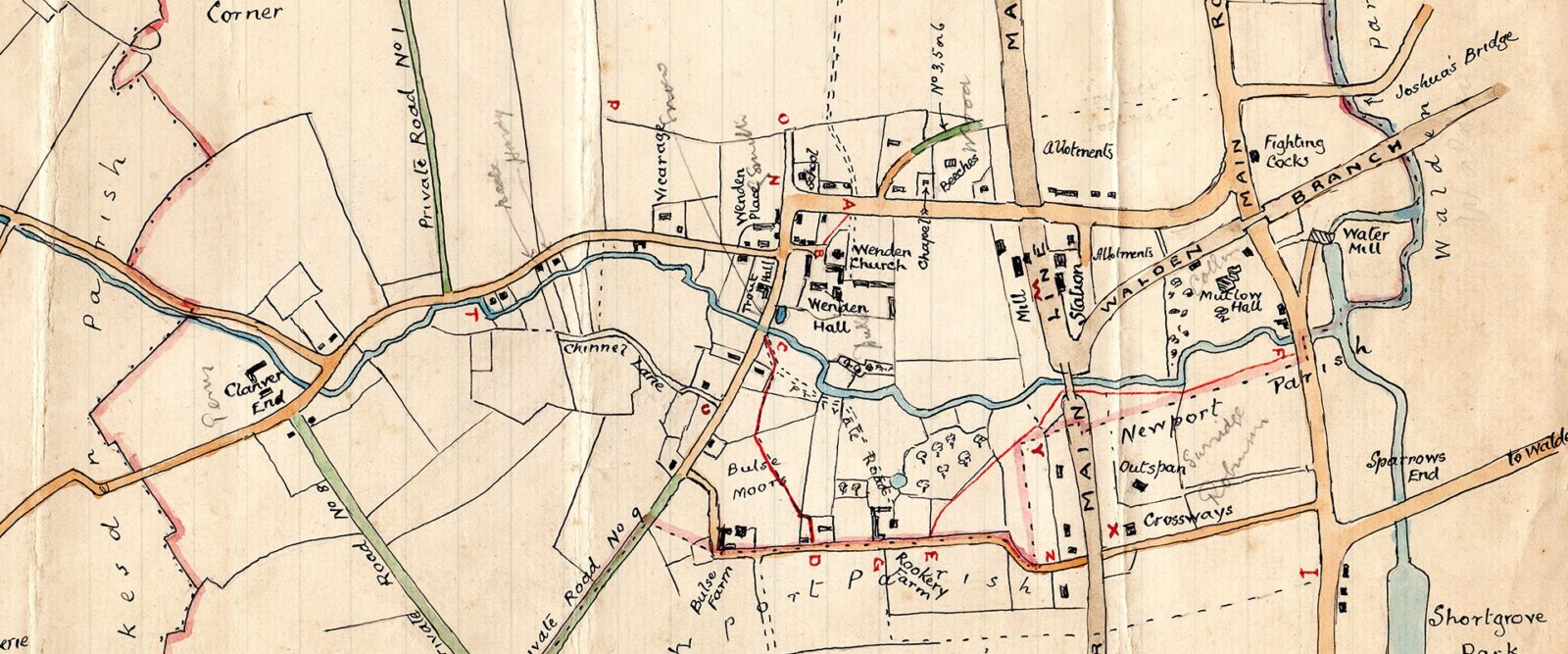
Bells
There are six bells dedicated (with new frames, etc) on November 11, 1904.
- Cast by Bowell of Ipswich 1904 25 inch*
- Cast 1700, Recast by Bowell of Ipswich 1904 27 in.
- Recast by Bowell of Ipswich 1904 28 in.
- The same 30 in.
- 1700 33 in.
- Andrew Jaggard & Thomas Barker C. W. 1700 36 in.
* on waist: In memory of Louis Collin, C. E Barnes Vicar, J. S. Smith – A Thomas Churchwardens.


Brass
In south aisle—Affixed to the south aisle wall, near the piscina, is a large stone slab which bears the brass of a man in plate armour (c. 1410) believed to commemorate Sir William Loveney who was patron of the living of Little Wenden. He has a large sword at one side and a dagger at the other and his hands are in gauntlets. His spurred feet rest on a crouching lion. Above his head are the outlines of three shields and there was an inscription plate below his feet.
Font and Piscina
A plain octagon font, from about 1400, standing on a massive square base. The wooden domed cover dates from about 1600 AD. It was originally raised by a rope passing around a pulley above.
The Piscina located In the chancel is a second piscina dated to the late 13th-century.

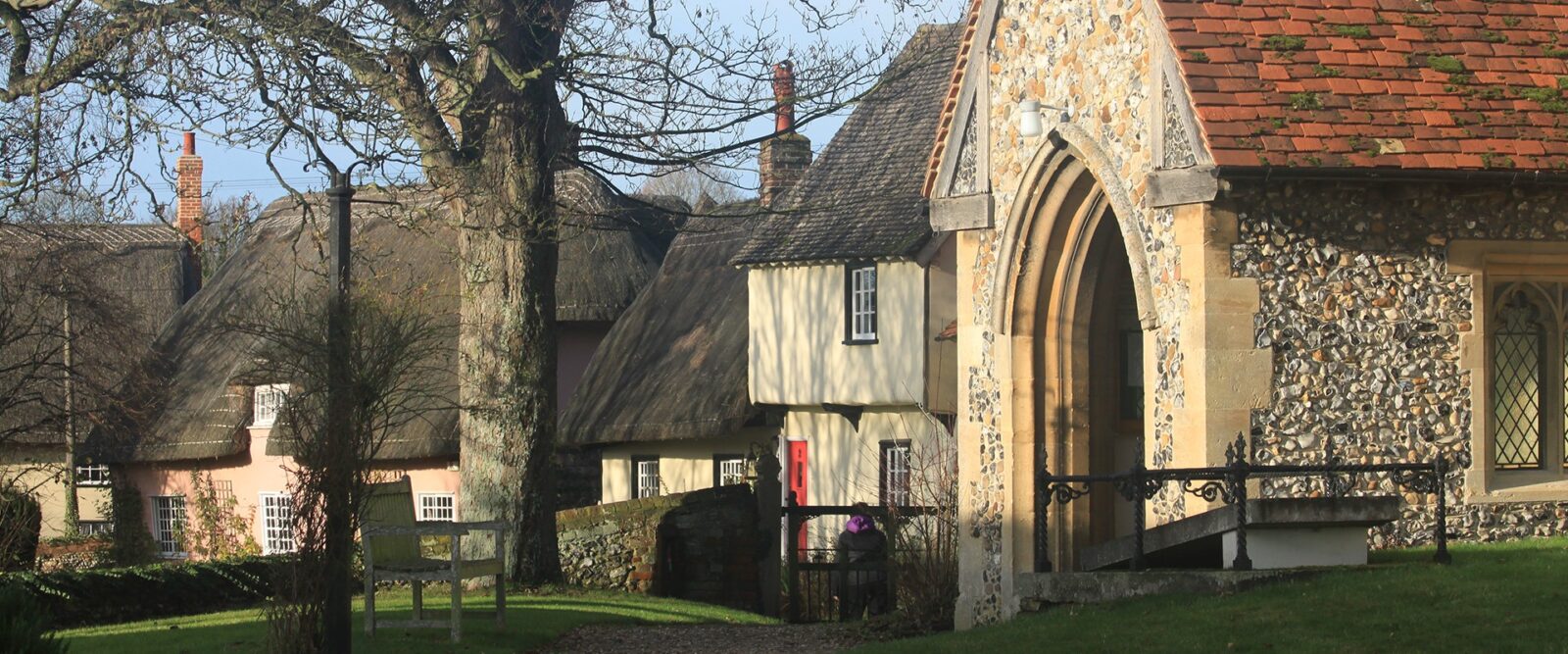
Tombs and Memorial Garden
Outside church porch to the right (east): Tomb of midshipman William Nicholson who moved to the village in 1850. His tomb reads: In loving memory of William Nicholson, of his parish Midshipman in Nelson’s, Vanguard who died December 16th 1886, in his 104th year. At evening time it shall be light.
Memorial Garden: This was consecrated in 2017 as a place for the interment of cremated remains. Beside the garden is a centennial memorial to those who fought and died in World War I and those who remained at home.

